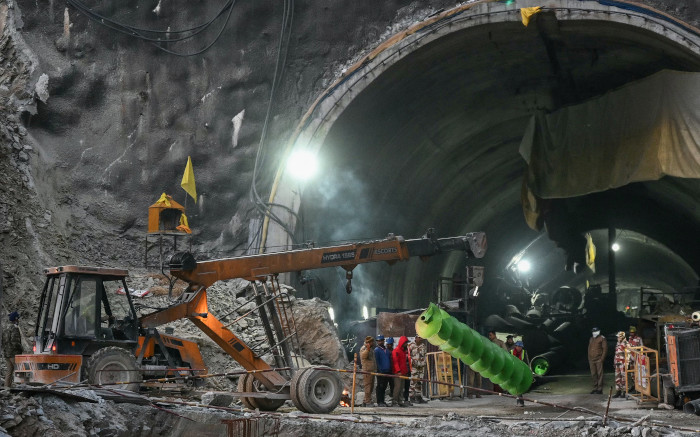
A tsunami warning is shown on television in Yokohama, near Tokyo, on Monday, January 1, 2024. Japan issued tsunami warnings on Monday after a series of strong earthquakes in the Sea of Japan. (AP Photo/Eugene Hoshiko)
TOKYO (AP) — Japan issued tsunami warnings and urged people to evacuate coastal areas after a series of strong earthquakes hit its west coast on Monday.
The Japan Meterological Agency reported earthquakes off the coast of Ishikawa and surrounding prefectures shortly after 4 p.m., one with a preliminary magnitude of 7.6.
It issued a major tsunami warning for Ishikawa and lower tsunami warnings or advisories for the rest of the west coast of Japan’s main island of Honshu.
Japanese public broadcaster NHK TV warned that streams of water could reach up to five meters (16.5 feet) and urged people to flee to higher ground or the roofs of a nearby building as quickly as possible .
NHK said the tsunami waves could return again and again and warnings would continue to be broadcast more than two hours after the first warning. Several aftershocks also shook the region.
Government spokesman Yoshimasa Hayashi told reporters that nuclear power plants in the area had not reported any irregularities. But he said it was crucial for people in coastal areas to escape the oncoming tsunami.
“Every minute counts. Please evacuate immediately to a safe area,” he said.
A tsunami about three meters high was expected to hit Niigata and other prefectures on Japan’s west coast. According to NHK, smaller tsunami waves have already been confirmed to have reached the coast.
The earthquakes themselves also caused damage. Japanese news footage showed reddish smoke rising from an area in the city of Wajima in Ishikawa Prefecture, suggesting a fire could break out there. Details were initially not known.
In another area, a house had collapsed and searches were underway to see whether people were trapped in the rubble.
High-speed trains in the area were stopped. According to NHK, parts of the highway were also closed and water pipes had burst.
Japanese media reports showed a crowd of people, including a woman with a baby on her back, standing next to huge cracks in the road surface.
The Meteorological Agency said in a nationally broadcast news conference that more major earthquakes could hit the area next week, especially in the next two or three days.
Tsunami warnings were also issued for Japan’s northernmost main island, Hokkaido, as well as parts of North Korea and Russia. Russian officials issued a tsunami warning for Sakhalin island, warning that areas on the island’s west coast could be affected by the waves.
In nearby South Korea, the weather agency urged residents of some eastern coastal towns to be alert to possible sea level changes. Tsunami waves that arrive later can be larger than the first ones.
The Japanese government has set up a special emergency response center to collect information about the earthquakes and tsunami and quickly disseminate it to residents to ensure safety, Prime Minister Fumio Kishida told reporters.
He reiterated the warning to immediately evacuate the affected areas.
Japan is an extremely earthquake-prone country. In March 2011, a severe earthquake and tsunami caused a core meltdown at a nuclear power plant.
___
Hyung-jin Kim in Seoul and Katie Davies in London contributed.
___
Yuri Kageyama is on X https://twitter.com/yurikageyama






Recent Comments